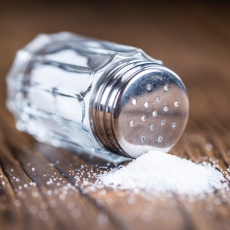
Table salt is a combination of two
Most people in the U.S. get more sodium in their diets than they need. A key to healthy eating is choosing foods low in sodium. The Dietary Guidelines recommend that most adults eat less than 2.3 grams per day. That equals about 1 teaspoon of table salt a day. Some people are more sensitive to the effects of salt than others and should eat less. This includes people who have high blood pressure, diabetes, or kidney problems, or are African American or over age 50. Reading
- Sodium (National Library of Medicine)Table salt is a combination of two minerals - sodium and chloride Your body needs some sodium to work properly. It helps with the function ... in your body. Your kidneys control how much sodium is in your body. If you have too ...
- Sodium Blood Test What is a sodium blood test? A sodium blood test measures the amount of sodium in your blood. Sodium is a type of electrolyte . Electrolytes are ... metabolic panel (CMP). Why do I need a sodium blood test? Your health care provider may order ... and become life-threatening. What happens during a sodium blood test? A health care professional will take ...
- Sodium is an element that the body needs to work properly. Salt contains sodium. ... The body uses sodium to control blood pressure and blood volume. Your body also needs sodium for your muscles and nerves to work ...
- The sodium blood test measures the concentration of sodium in the blood. Sodium can also be measured using a urine test . ... Sodium is a substance that the body needs to work properly. Sodium is found in most foods. ...
- ... health care provider may suggest you lower your sodium intake. Look for these words on labels: low-sodium, sodium-free, no salt added, or unsalted. Check ...
- The sodium urine test measures the amount of sodium the urine. Sodium can also be measured in a blood sample . ... to help determine the cause of an abnormal sodium blood level. It also checks whether your kidneys ...
- Fractional excretion of sodium is the amount of salt (sodium) that leaves the body through urine compared to the amount filtered and reabsorbed ...
- Calcium, magnesium, potassium, and sodium oxybate is used to treat attacks of cataplexy (episodes of muscle weakness that begin suddenly and last for a short ...
- Sodium oxybate is used to prevent attacks of cataplexy (episodes of muscle weakness that begin suddenly and ... urge to sleep during daily activities, and cataplexy). Sodium oxybate is in a class of medications called ...
- Rectal sodium phosphate is used to treat constipation that happens from time to time. Rectal sodium phosphate should not be given to children younger ...



